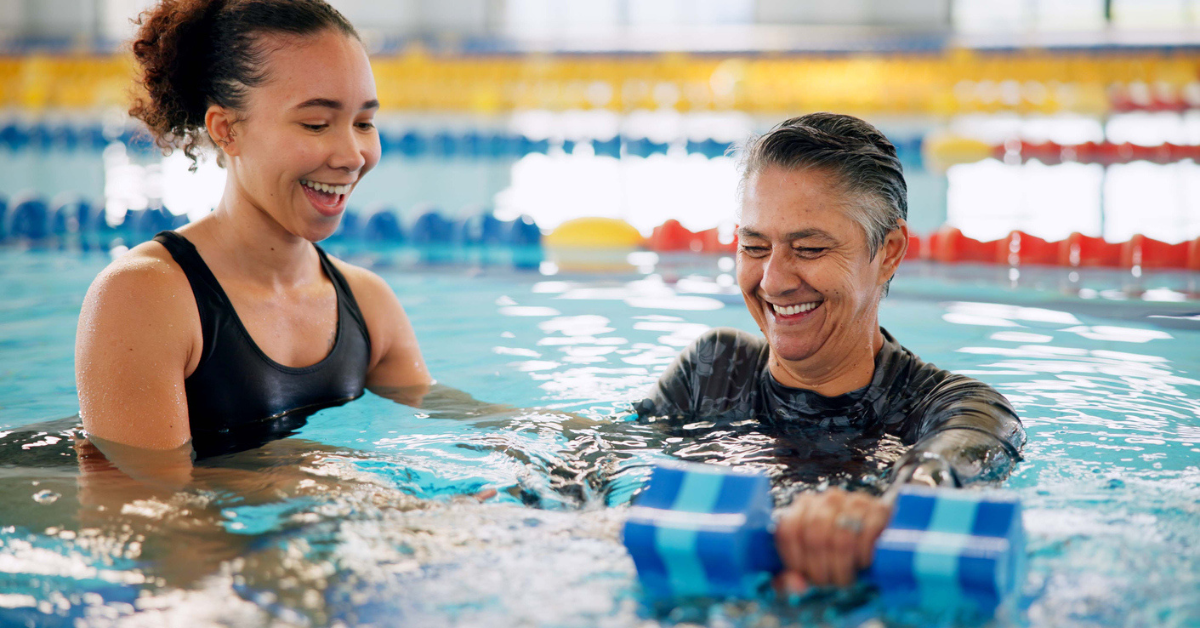As we age, maintaining balance and mobility becomes increasingly important. One great option for seniors seeking to build strength to help avoid falls and improve mobility is aquatic therapy.
A warm-water therapy pool, such as the one at Tidelands Health Pawleys Family YMCA, can provide an ideal environment to strengthen muscles and joints, including the all-important and often-overlooked core muscles that help us stay upright.
Tidelands Health is the exclusive health system partner of the YMCA of Coastal Carolina, including Claire Chapin Epps Family YMCA in Myrtle Beach, Tidelands Health Pawleys Family YMCA and Tidelands Health Georgetown Family YMCA. Together, the two organizations are providing the community with access to a broad variety of services and programs to improve health and wellness.
“Aquatic therapy is good for anybody who has a decreased tolerance to weight-bearing exercises,” says Danielle Wirick, a physical therapist at the YMCA.
Wirick says several factors make aquatic therapy a great way to help seniors remain healthy and active:
Buoyancy
Support from chest-deep water can take as much as 50 percent of a person’s weight off their joints and limbs, reducing strain on joints and making it easier to move. By reducing the pull of gravity, the water also improves blood circulation, particularly as it returns to the heart.
Hydrostatic Pressure
The weight of the water pressing against your body from all sides helps enhance venous return and cardiac function, reducing swelling in limbs and joints.
Resistance
While moving through the water makes our muscles work harder than normal, it puts very little stress on joints. It’s easy to increase resistance by moving more quickly through the water or using water weights.
Biomechanics
This factor reflects people’s ability to overcome buoyancy and resistance of the water.
“Their body is going to be working in the pool, even walking,” says Wirick. “They’re going to be using their core muscles to keep their feet on the bottom of the pool.”
Turbulence
Other people in the pool can make waves that push you around, forcing you to use your muscles to counter their forces.
“Any time you’re adding turbulence, it will make it harder for you to maintain your balance,” says Wirick.
All these factors come together during a workout in the pool, whether you’re doing aerobics, walking, jogging or simply floating in place.
A workout in the water has another advantage as well: it’s forgiving. There’s no need to worry about injuring yourself if you lose your balance. There’s no falling in the pool.
“If you lose your balance, the water will catch you,” says Wirick.




